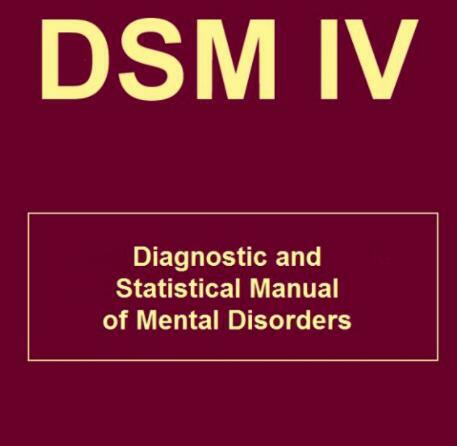
In applied psychology, investigative psychology attempts to describe the actions of offenders and develop an understanding of crime. This understanding can help solve crimes and contribute to prosecution and defense procedures. It gathers problems in the retrieval of research information, the design of inferences about that information and the ways in which police decision-making can be supported through various systems derived from the scientific investigation. It should not be confused with the profile that emerged from the experience of police officers offering opinions to their colleagues about the possible characteristics of unknown offenders.
Variable. (X) Characteristic that can assume more than one value. Eg Extraversion, verbal fluency, IQ, self-esteem, depression, etc.
Variable value. (x1, x2,..., xn) They can be numeric or categorical.
Constructs: Abstract conceptual entities of impossible definition at the present time since they respond to aspects of human behavior that are impossible to specify exactly. (Terms we use to refer to variables that are not directly accessible). Eg Intelligence. If we develop a measure for that constructor, within a given theory, we will have a characteristic that can assume one or more values and this would be a variable.
Constant.
Single value feature. Ex. E = 2.7182. If we consider only men in a given study, gender will be a cte.
Types of variables associated with the measurement scales.
They are those that generate their values in the different scales:
- Nominal variables or categorical variables. Eg sex Ordinal variables. Eg. Finish order of the athletes participating in a marathon
- Interval variables. Eg Aperture measured by the Personality Test
- Ratio variables. Eg Time elapsed in responding to a light stimulus.
Types of variables based on what they designate:
- Qualitative variables. Those that only designate a quality or attribute. You have or you don't have a quality or you have it to a greater, lesser or equal degree. It is subdivided into mutually exclusive or exhaustive classes. An object cannot belong to more than one class and all objects can be assigned to some class.
- Dichotomous variables, silent variable or "dummy". They have only two classes or categories. It is normally coded as (0 and 1) Eg degree of opening (open or closed). They are usually used in the application of the General Linear Model (GLM) and the calculation of the point biserial correlation.
- Polytomous variables. They admit more than two classes or categories. Eg Religion (Catholics, Jews, Protestants ...)
- Quasi-quantitative variable. Allows an ordinal order or variable. Quantitative variables. Those that designate an amount.
- Discrete variables. They admit only integer values. Eg Frequency of headaches before receiving treatment.
- Continuous variables. They admit any value along the real scale. Eg Reaction time to a visual stimulus.
Nominal and ordinal variables are qualitative. Interval or ratio variables are quantitative.
Variables for their role in a function or model. Function. Relationship between variables in which each value of the first variable is assigned a single value of the second. Ex.: S = c ln E + k (V.I.)
Independent variable, antecedent or stimulus, predictor, causal, factor (in the classification and naming of the experimental designs). It is the one manipulated by the researcher. It is a form of physical or social energy, existing in the environment, to which the organism is sensitive. It allows to predict the results or lead to make forecasts. An independent variable can be the "cause" of another variable. "E" represents the magnitude of any stimulus and is the one that comes first. Eg You want to know if the Benzodiazepine induces relaxation. Several doses of this substance are then taken and administered to anxious patients.
The independent variable will be the different doses or values of the substance. The dependent variable, the degree of relaxation. Designs: Unifactorial. A single V.I. Factorials. Two or more V.I. One V. I. It can be of two types depending on how its values (levels, conditions or treatments) have been selected: V. Fixed Independent. The one in which the researcher has chosen specific levels of it for his research. This choice limits the study conditions by offering results only for the values of the chosen levels. V. Independent Randomized. The one in which the conditions or levels of it have been selected randomly.
This choice widens the interpretation of the research results to the population. (V.D.) Dependent variable, response, of the task or consequent that measures the effect of the change in the independent variable. It is some type of behavior or reaction that the researcher requires from the subject. "S" represents the behavior or reaction that the researcher requires from the subject, it comes as a consequence of the change in V. I ..
Denominations of the V. D.:
- Forecast. When it is the result of different values of the IV.
- Criterion variable. A dependent variable that is related to forecasts.
- Target variable or target or "target". It is a dependent variable whose results we want to predict using other variables.
- Strange variable. If there is another variable outside the relationship sought and influencing the relationship.
- There are two ways to eliminate this unwanted effect: A statistic (with analysis of covariance)
- Another control of research planning.
- Organismic variable or variable of the subject. It is some physiological or psychological characteristic of the subject under study.
The sensations or responses depend on the intensities of the stimuli. Stimulus variable. Form of physical energy in the environment that affects the body. It can be a strange variable.
This article is merely informative, in Psychology-Online we do not have the power to make a diagnosis or recommend a treatment. We invite you to go to a psychologist to treat your particular case.


